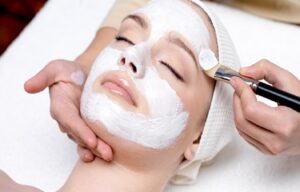Ampoules have become a popular part of many skincare routines due to their high concentration of active ingredients and ability to produce apparent benefits quickly. The Babor ampoule, for example, is well-known for its strong compositions that target specific skin issues. However, in order to reap the most benefits from ampoules, you must understand how to stack them effectively with other skincare products. This article will walk you through the process of introducing ampoules into your routine, ensuring that you get the optimum benefits without jeopardising your skin’s health.
Understanding Ampoules
Ampoules are highly concentrated serums that deliver a high dose of active chemicals to the skin. They are packaged in small, single-use vials to protect the product’s effectiveness and freshness. Ampoules are frequently used to address specific skin concerns, such as dehydration, dullness, fine wrinkles, and hyperpigmentation. Because of their high concentration, they are often utilised as a therapy step in your skincare routine, delivering a significant boost to your existing products.
The Proper Order of Application
Layering skincare products in the proper order ensures that each product is adequately absorbed and performs its intended function. The usual rule of thumb is to apply products ranging from thin to thick. This means starting with lighter, water-based products and progressing to heavier, oil-based ones.
After cleansing and toning your skin, apply the ampoule. Because ampoules, like the Babor ampoule, have a lightweight, serum-like composition, they should be used before bulkier products like moisturisers or oils. This helps the active substances to penetrate deep into the skin without being impeded by heavier items.
Ampoules and Serum and Essences
Ampoules can be combined with different serums and essences to create a unique skincare routine. When using multiple products, apply the ampoule first, then the additional serums or essences. This guarantees that the ampoule’s highly concentrated contents are absorbed efficiently.
If you’re using a moisturising essence or serum, apply it after the ampoule. This can help seal in the ampoule’s active components while also adding moisture. Layer serums that address specific issues, such as brightening or anti-ageing, on top of the ampoule to enhance its effects.
Moisturisers and Ampoules
After you’ve applied your ampoule and any additional serums, seal everything in with a moisturiser. Moisturisers aid to retain moisture and form a protective barrier on the skin. When selecting a moisturiser, look for one that is suitable for your skin type and complements the active elements in your ampoule.
For example, if you’re using a hydrating ampoule, choose a moisturiser that provides long-lasting moisture. If your ampoule focuses on anti-ageing, a moisturiser containing extra anti-ageing components can boost the overall effect.
Adding Ampoules to Morning and Evening Routines
Ampoules can be used in both morning and evening skincare regimes, but it is vital to select the appropriate ampoule for each time of day. In the morning, apply an ampoule that gives antioxidant protection or hydration. To protect your skin from the elements, use a moisturiser and sunscreen afterwards.
In the evening, concentrate on repairing and rejuvenating. Use an ampoule containing retinol or peptides to stimulate collagen formation and improve skin texture overnight. Apply a nutritious moisturiser to help the skin’s natural repair process.
Conclusion
Combining ampoules with other skincare products can greatly improve your routine and produce spectacular results. By following the proper application sequence and selecting complementing items, you may ensure that the active chemicals in your ampoule, such as those in a Babor ampoule, perform properly. Remember to customise your routine based on your skin type and unique needs, and be aware of how different components interact with one another. With these tips and tactics, you can get a glowing, healthy complexion while getting the most out of your ampoules.




